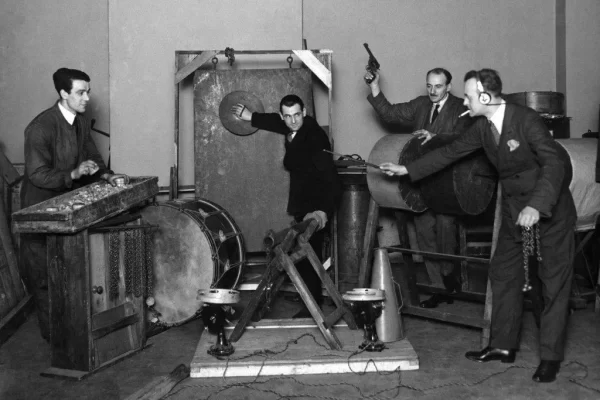Embarking on the captivating journey of photography unveils a world where light, colour, and composition converge to create visual poetry. Within this realm, camera lenses and optics are the artists’ tools, enabling them to capture and convey the essence of moments. These lenses paint narratives that transcend words from wide vistas to intimate details. The intricate interplay between focal lengths, apertures, and lens types shapes how stories unfold through images. Understanding these elements unlocks the door to creative expression and technical prowess. To learn more, consider joining online photography courses that delve into the secrets of camera lenses and optics, offering insights into the mechanics that elevate your photography skills.
Understanding Focal Lengths and Perspectives: The art of photography thrives on perspectives, each lens offering a unique viewpoint. Focal lengths, measured in millimetres, determine how a scene is captured. Wide-angle lenses, typically 14mm to 35mm, encompass more of the scene, making them ideal for landscapes and architecture. Standard or regular lenses, around 50mm, replicate the human eye’s field of view, suitable for portraits and everyday scenes. Telephoto lenses exceeding 70mm magnify distant subjects, bringing details into sharp focus. Each focal length tells a different story, inviting photographers to weave narratives through their lens choices.
Aperture: The Gateway to Light Control: Aperture, denoted by f-numbers, influences depth of field and light intake. A wide aperture, like f/1.4, creates a shallow depth of field, isolating subjects from backgrounds with creamy bokeh. Narrow apertures, such as f/16, expand the depth of field, ensuring more elements remain in focus. Controlling aperture alters an image’s mood and message, whether it’s capturing a portrait with dreamy background blur or a landscape with everything sharply defined.
Prime Lenses vs Zoom Lenses: Prime lenses offer fixed focal lengths, encouraging photographers to move and frame creatively. They often excel in image quality, being simpler in design. Zoom lenses, with variable focal lengths, offer convenience, allowing photographers to zoom in and out without changing lenses. While prime lenses may demand more thought in composition, they often produce sharper images. Zoom lenses provide adaptability, making them suitable for various scenarios.
Macro Photography: Macro lenses are the portal to the intricate world of the minuscule. They boast high magnification, enabling photographers to capture the tiniest details. Exploring a dewdrop’s texture or the intricacies of an insect’s wing becomes a mesmerising endeavour. Macro lenses offer a fresh perspective on familiar objects, revealing hidden beauty and inviting viewers to appreciate the small wonders around them.
Wide-Angle Wonders: Expanding the Horizons: Wide-angle lenses breathe life into expansive scenes. They stretch perspectives, allowing photographers to encompass vast landscapes or fit a bustling cityscape into a single frame. However, wide-angle lenses demand careful composition, as they can distort lines and proportions. When harnessed skillfully, these lenses create immersive images, pulling viewers into the heart of the photograph.
Telephoto Lenses: Bringing the Distant Closer: Telephoto lenses bridge geographical gaps, bringing distant subjects within reach. Whether capturing wildlife on a safari or athletes in action, telephoto lenses excel at isolating subjects and capturing emotions from a distance. They compress the scene, emphasising subjects against soft backgrounds. Telephoto lenses provide a unique way to tell stories that might otherwise be unattainable.
Optical Image Stabilisation: A Steady Hand in Unsteady Moments: Optical Image Stabilisation (OIS) is a technology that counteracts camera shake. It’s particularly beneficial when shooting handheld in low light conditions or capturing fast-moving subjects. OIS allows photographers to maintain sharpness and clarity, even in challenging scenarios. It ensures that fleeting moments are captured precisely, minimising hand tremors’ effects.
Lens Coatings: Unveiling Clarity and Reducing Glare: Lens coatings, often composed of thin layers of special materials, improve image quality by minimising unwanted reflections and reducing glare. These coatings are essential for enhancing contrast, colour accuracy, and sharpness. They also play a crucial role in preventing lens flares, ensuring images are captured with clarity and richness.
Expanding Horizons with Fish-Eye Lenses: Fish-eye lenses offer a unique perspective that defies conventional photography norms. These ultra-wide-angle lenses create a distinct spherical distortion, capturing a single frame’s expansive field of view. They can bend and curve lines in ways that challenge perception, resulting in captivating and surreal images. The creative potential of fish-eye lenses lies in their ability to transform mundane scenes into dynamic visual experiences. Whether capturing architectural wonders, landscapes, or even portraits, fish-eye lenses open up new horizons for photographers to explore.
Taming Light Flares with Lens Hoods: In photography, light flares can add an artistic touch or inadvertently diminish the quality of an image. Lens hoods, often overlooked but highly valuable accessories, are crucial in controlling unwanted light and flares. These hood attachments shield the lens’s front element from stray light, preventing it from hitting the lens surface and causing flare. Photographers can use lens hoods to maintain optimal contrast and saturation while protecting their lenses from potential damage. Understanding when and how to use lens hoods empowers photographers to harness light’s creative potential while ensuring their images remain free from distracting artefacts.
Conclusion:
Camera lenses and optics are the conduits through which moments morph into memories. Their intricacies, hinging on focal lengths and apertures, transmute visions into tangible art. To delve deeper into this realm and master the craft, consider joining online photography courses. These courses offer insights into the mechanics that elevate photography, ensuring that every frame is a testament to the harmonious interplay of technology and creativity.





